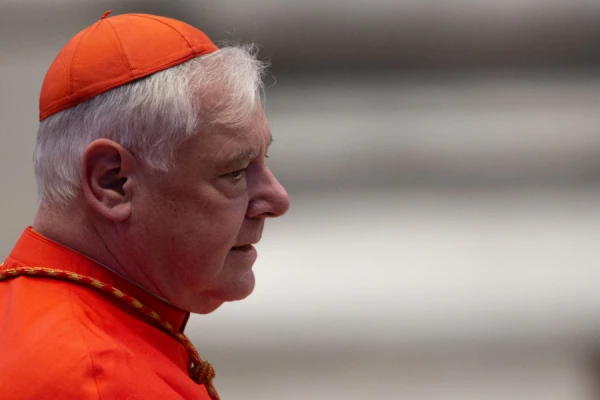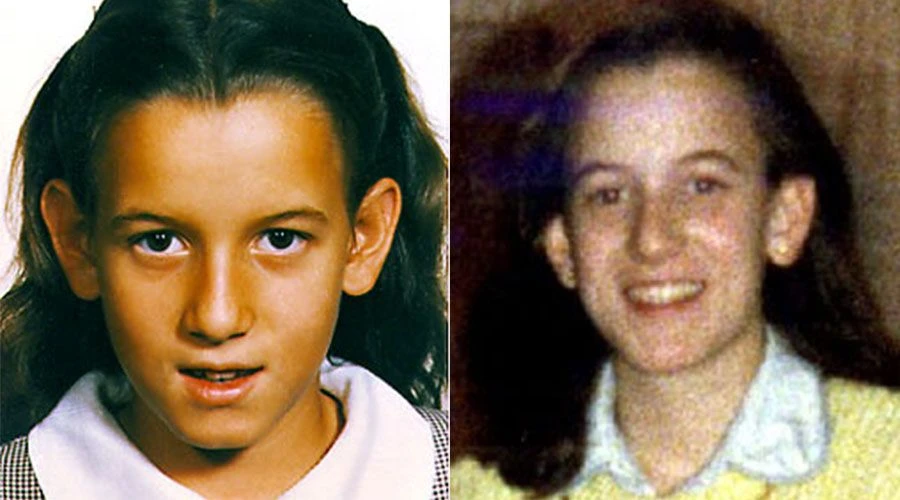
Rome Newsroom, Jan 12, 2021 / 06:05 am (CNA).- The former head of the Vatican’s doctrinal office said on Sunday that today’s media environment is undermining theological truths that are the foundation of Church unity.
“In the era of secular thought and the mass media, political and ideological points of view end up contaminating theological judgment — that is, the way of seeing the faith of the supernatural mission of the Church,” Cardinal Gerhard Müller wrote in an essay published online Jan. 10.
“At the extreme, the principles of Catholic theology are suspected of ‘conservative’ or ‘liberal’ ideology, depending on the point of interest,” he said in the text published by the Italian media outlet La Nuova Bussola Quotidiana.
Müller, the prefect of the Vatican Congregation for the Doctrine of Faith from 2012 to 2017, said that in today’s media environment, which is dominated by images, “theological criteria are today more difficult to convey, as they require understanding through concepts and judgments of thought.”
The German cardinal added that “the Holy See seems … to give greater weight to the phenomenon of media dominance since it has increased the number of collaborators in the Dicastery for Communication compared to the Congregation for the Doctrine of the Faith.”
He expressed concern in particular with “the visual image of ‘two popes’ side by side,” saying that both the secular and Catholic media have “the subtle problem of comparing the pontificates of two living people.”
“The evidence of this harmful antagonism of the pontificates of two living actors of current history are legion and are reflected daily in the comments of newspapers, blogs, related web pages, and propaganda films,” he said.
“For the people of God, it is of true spiritual and theological interest not what distinguishes the previous pope from the current one in personal style, but what unites Benedict XVI and Pope Francis in their concern for the Church of Christ.”
“At stake are both the dignity of the Petrine ministry that a previous pope held and the recognition of his merits for the Church, which are to be incorporated into reflections of his ecclesiastical position,” Müller said.
When people “speak of two popes,” a particular problem arises from an “ecclesiological point of view,” the 73-year-old cardinal argued.
“The problem, for the truth of faith, arises from the fact that the Bishop of Rome, as the successor of Peter, is the principle of unity that, precisely, must be realized by one person only,” he said.
“For two people cannot embody ‘the perpetual and visible principle and foundation of the unity of both bishops and the multitude of the faithful,’” the cardinal said, quoting “Lumen gentium,” the Second Vatican Council’s Dogmatic Constitution on the Church. “The number two, in fact, is in contrast with the number one, multiplicity with unity.”
Müller added that the bishop of Rome is not like the bishops of other dioceses, where it is the usual practice to have both a diocesan bishop and a bishop emeritus, because the bishop of Rome is “personally the successor of Peter and thus represents the rock on which Jesus builds his Church.”
“Because the title of ‘pope’ only concerns the customary designation of the bishop of Rome, due to his prerogatives as successor of Peter,” he said. “He is not the successor of his predecessor and for this reason, two bishops of Rome, popes and successors of Peter, can never exist at the same time.”
“There is no doubt that, according to the will of God, the bishop of Rome is the successor of Peter and that he exercises, with the authority that Christ has conferred on him (Matthew 16:18), the ‘power of the keys’ over all the Church,” he reflected.
Müller underlined that, although “ideologues of the media” had imposed “constructed images of the Church” on the faithful, there was only one true image of the Church: “a people that derives its unity from the unity of the Father, the Son and the Holy Spirit.”
“‘The Church of the living God, pillar and support of the truth’ (1 Timothy 3:15) is the witness and mediator of the irrevocable self-communication of God, as truth and life of every man,” Müller wrote.
If you value the news and views Catholic World Report provides, please consider donating to support our efforts. Your contribution will help us continue to make CWR available to all readers worldwide for free, without a subscription. Thank you for your generosity!
Click here for more information on donating to CWR. Click here to sign up for our newsletter.




“When people speak of two popes, a particular problem arises from an ecclesiological point of view, the 73-year-old cardinal argued”. Rather more than strictly ecclesial is the divide within the Church on doctrine, and essentially Christology. Apostolically the Word whose words are immutable compared to the words of a transient gospel subject to a new Epoch. Insofar as the antagonistic issue of who is pontiff, assertions regarding Benedict’s words of resignation the allegation that technically he retains the munus, Francis is merely bishop of Rome, the non canonical election of Cardinal Bergoglio due to forbidden canvassing – all of that is now an entirely moot issue because none of it can be convincingly proved. Although Cardinal Müller is correct. All the moot arguments underlie the unifying dimension of the Chair of Peter. However, as I allude we must consider that if there were a true hermeneutic from John Paul II, Benedict XVI, and Pope Francis there really would not be an ecclesial issue regarding unity. No matter how the faithful Cardinal cuts it in defending that hermeneutic and Francis’ presumed doctrinal orthodoxy the Body of believers perceive radical change with Francis. The saving quality of this change is that Francis, in tandem, offers us an entirely orthodox doctrine consistent with his two predecessors. And a parallel entirely heterodox doctrine promoted by suggestion [as in footnote 351 Amoris and the inconclusive non definitive exchange of Argentine Pontifical letters entered in the AAS] structural change particularly the demotion of the CDF, ascendance of Propaganda Fides, and all the questionable appointments at the Vatican and Dicasteries. Thankfully we have the choice, or better the obligation to conform conscience to the former orthodox.
A final note on the doctrinal dualism of Pope Francis. From the perspective of what consists as Authentic Magisterium there is a split in opinion. The Argentine Pontifical exchange of letters entered into Acta Apostolicae Sedis do not qualify. Although the intent of Pope Francis is evident it does not conform to Proposition 2 Doctrinal Commentary to Ad Tuendam Fidem, which requires that any explanatory teaching on the Deposit of the Faith [Proposition 1 on marriage and adultery] must be clearly and definitively defined. The submission of the Dubia is intended to confirm or deny what is merely implied. That the Pope refuses to respond does not confirm authentic doctrine, rather leaves it as a suggestion. The other traditional doctrine on the viability of the death penalty considered infallible disputed by some is similarly ambiguous. The reason is the Pontiff’s use of the term “inadmissible”, which is not a declaration that the penalty is never admissible. As a personal opinion my belief is Our Lord prevents Francis or any Pontiff to definitively abrogate the Deposit of the Faith. All the more reason to reject these suggestions.